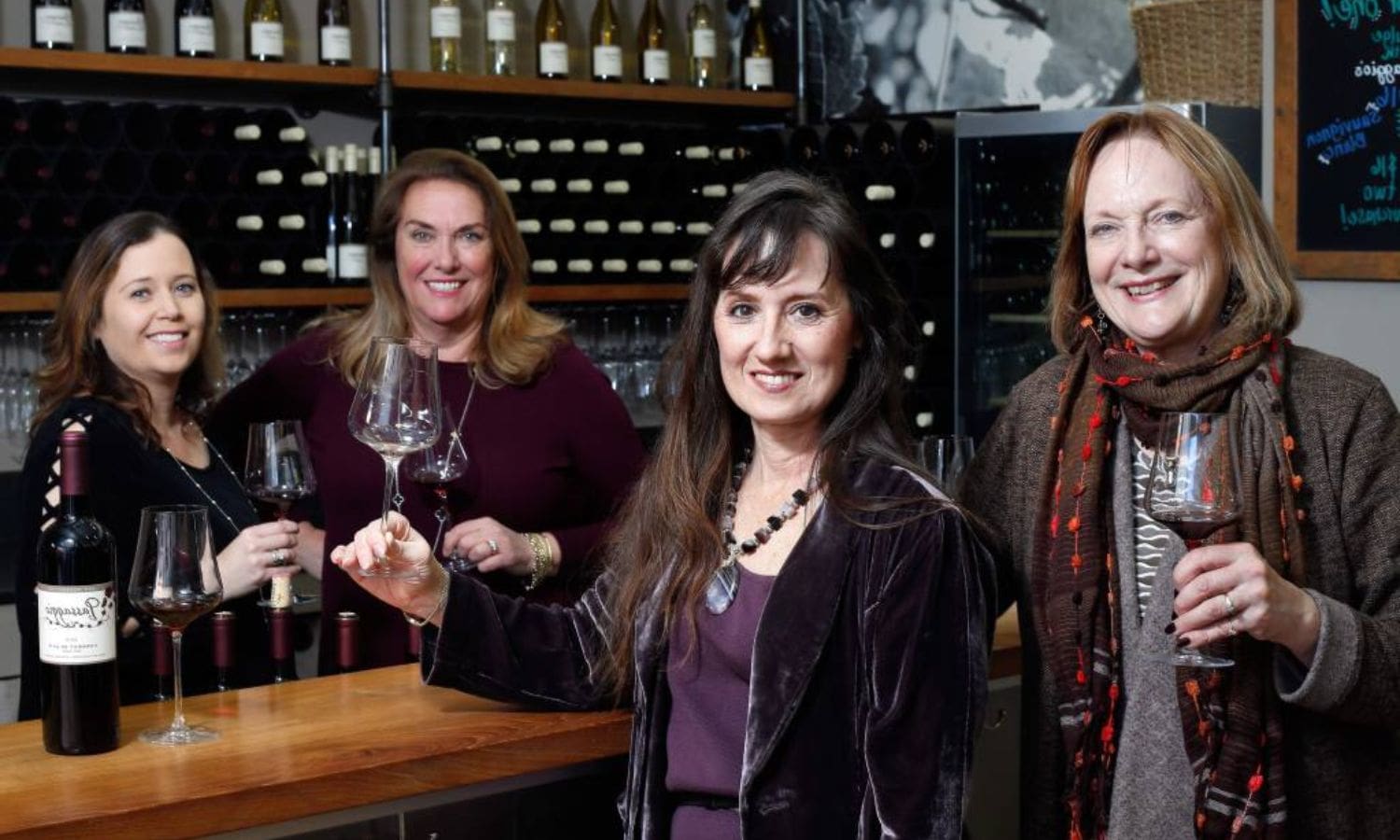Tech Showcase in Sacramento: California’s wine industry has long been a symbol of excellence, but it faces its fair share of challenges. From climate change and labor shortages to increasing competition, winemakers in the Golden State are constantly seeking innovative solutions to safeguard their industry’s future.
In this tech showcase held in Sacramento, industry leaders will gather to address these challenges head-on, presenting cutting-edge technological advancements designed to revolutionize the way wine is produced, harvested, and marketed.
The world of agricultural innovation and sustainability, we will uncover how these advancements are not only reshaping the wine industry but also paving the way for a more prosperous and resilient future.
Key Takeaways Of Tech Showcase in Sacramento
- The wine industry in California is facing various challenges such as environmental factors, disrupted vineyard operations, and financial losses.
- Technological solutions, including the use of drones, blockchain technology, and artificial intelligence, are being showcased as ways to address these challenges.
- These technologies offer benefits such as improved data collection and analytics, precision agriculture, and enhanced disease and pest management.
- The wine industry is committed to sustainability and growth, with an emphasis on conservation, adoption of innovative technologies, and collaboration for promoting sustainability.


Also Read: Crowd Machine and Metavine Ordered to Pay $20M in CMCT Lawsuit”
Challenges Facing California’s Wine Industry
California’s wine industry faces a multitude of challenges, including environmental factors such as droughts, wildfires, pests, and diseases. These challenges have had a significant impact on wine sales and placed economic pressures on family farmers.
These challenges have disrupted vineyard operations, reduced grape yields, and affected the overall quality of wines produced in the region. Droughts have caused water scarcity, forcing farmers to rely on limited water resources, impacting the growth and health of vines.
The increasing frequency and intensity of wildfires have destroyed vineyards, leading to significant financial losses for wine producers. Pests and diseases, such as the glassy-winged sharpshooter and Pierce’s disease, have ravaged vineyards, requiring costly pest management and disease prevention measures.
These challenges not only threaten the livelihoods of family farmers but also impact the reputation and competitiveness of California’s wine industry on a global scale.
Technological Solutions on Display
The Tech Showcase in Sacramento, highlighting cutting-edge technological solutions, is an ideal choice for those seeking innovative solutions to challenges in the wine industry.
At the Unified Wine and Grape Symposium, attendees had the opportunity to explore a range of technological solutions on display. One such solution is the use of drones in vineyard management. Drones equipped with cameras and sensors can collect real-time data on plant health, water stress, and pest infestation, allowing winemakers to make informed decisions and optimize vineyard operations.
Another technology showcased is blockchain, which can enhance transparency and traceability in the wine supply chain. By securely recording and tracking every step of the production process, blockchain can help prevent fraud and ensure the authenticity of wine products.
Additionally, artificial intelligence and machine learning were demonstrated to enable predictive analytics, helping winemakers forecast weather patterns, predict grape yields, and optimize harvest timing. These technological advancements offer promising solutions to the challenges faced by California’s wine industry, revolutionizing the way wine is produced and ensuring its continued success.
Best For: Winemakers and vineyard managers in the wine industry seeking innovative technological solutions to optimize vineyard operations and enhance transparency in the supply chain.
Pros:
- Drones equipped with cameras and sensors provide real-time data on plant health, water stress, and pest infestation, enabling informed decision-making and operational optimization.
- Blockchain technology enhances transparency and traceability in the wine supply chain, preventing fraud and ensuring the authenticity of wine products.
- Artificial intelligence and machine learning enable predictive analytics, helping winemakers forecast weather patterns, predict grape yields, and optimize harvest timing.
Cons:
- Implementing and managing drone technology may require additional training and resources.


Optimism Amidst Difficulties
As the wine industry faces its fair share of challenges, there is a sense of optimism among industry professionals, fueled by the potential of new technologies to overcome these difficulties. Here are four reasons why industry experts remain hopeful amidst the obstacles:
1) Improved data collection and analytics: New technologies allow for more accurate and detailed data on factors such as soil composition, weather patterns, and vine health. This data enables growers to make more informed decisions and optimize their vineyard management practices.
2) Precision agriculture: Innovations such as drones and satellite imaging enable growers to monitor their vineyards more efficiently and identify areas that need attention. This targeted approach helps optimize resource allocation and improve overall productivity.
3) Enhanced disease and pest management: New technologies offer more effective and environmentally friendly solutions for combating diseases and pests. From advanced sensors to automated spraying systems, these innovations help protect vineyards and ensure healthier grape yields.
4) Sustainable practices: The wine industry is increasingly embracing sustainable practices, such as water conservation and renewable energy. New technologies, like smart irrigation systems and solar power, make it easier for wineries to reduce their environmental impact and enhance their long-term sustainability.
While challenges persist, the wine industry’s optimism is bolstered by the potential of technological advancements to overcome these difficulties. By harnessing the power of innovation, industry professionals are confident in their ability to navigate and thrive in an ever-changing landscape.
Showcasing Innovation in Agriculture
In addressing the challenges faced by the wine industry, showcasing innovation in agriculture has become a crucial focus. High-tech tractors and hyperspectral cameras are playing a significant role in addressing environmental setbacks.
These advanced tractors are equipped with GPS systems that allow for precise navigation and reduce soil compaction. This, in turn, helps to preserve soil health and maintain optimal growing conditions for vineyards.
Hyperspectral cameras, on the other hand, can detect plant diseases and nutrient deficiencies by analyzing the reflected light from crops. By identifying these issues early on, farmers can take necessary measures to mitigate the impact on their crops.
Technological advancements are also helping to alleviate economic pressures on the wine industry. By adopting innovative solutions, farmers can improve productivity, reduce costs, and ultimately enhance the profitability of their businesses.
Showcasing these agricultural innovations is vital in ensuring the sustainability and success of the wine industry in California.
Commitment to Sustainability and Growth
Building upon the advancements in agriculture showcased previously, the commitment to sustainability and growth in California’s wine industry remains a top priority for family farmers and industry leaders alike. Here are four key ways in which the industry is addressing this commitment:
- Emphasis on conservation: California’s wine industry is dedicated to preserving natural resources by implementing sustainable farming practices, such as water conservation, soil health management, and biodiversity preservation.
- Adoption of innovative technologies: From precision viticulture to data-driven decision-making, the industry is leveraging technology to optimize resource allocation, reduce waste, and improve overall efficiency.
- Collaboration and knowledge sharing: Family farmers and industry leaders actively collaborate and share best practices to promote sustainability and growth, ensuring the longevity of the industry.
- Market demand for sustainability: Consumers are increasingly seeking out sustainably produced wines, driving the industry to prioritize eco-friendly practices and certifications to meet this growing market demand.
Through these efforts, the California wine industry is committed to ensuring a sustainable and prosperous future for both the environment and the industry.


Conclusion Of Tech Showcase in Sacramento
The tech showcase in Sacramento highlighted the challenges facing California’s wine industry and the technological solutions being implemented.
The event demonstrated the industry’s commitment to sustainability and growth through innovative agriculture practices.
Despite the difficulties faced, there was an overall sense of optimism for the future.
This showcase served as a platform to showcase the advancements and potential in addressing the challenges and ensuring the continued success of California’s wine industry.
Our Reader’s Queries
Q1. What are the challenges facing the wine industry?
A. “In a recent survey, prominent winemakers identified key challenges for 2023, including climate change, labor shortages, geopolitical tensions, tariff fluctuations, and the delicate balance of personal life. This article delves into the insights provided by some of the world’s leading winemakers regarding the challenges they anticipate in the current year.”
Q2. Which of the following accounts for California being a well suited place to grow wine grapes and make wine?
A. “California stands out as a geologically diverse region, offering a wide spectrum of climates and terroirs. The majority of the state’s wine regions are situated between the Pacific coast and the expansive Central Valley.”
Q3. Who is the largest wine producer in California?
A. “Gallo, headquartered in Modesto within the San Joaquin Valley, holds the title of the largest wine producer in California and stands as the world’s largest privately-owned wine producer.”
Q4. What region of California is known for growing wine?
A. “The North Coast, housing the grape regions pivotal to California’s wine reputation, includes Napa, Sonoma, Mendocino, Lake, Solano, and Marin Counties. This expansive wine-growing region hosts over half of the state’s wineries and holds the designation of an American Viticultural Area (AVA).”

